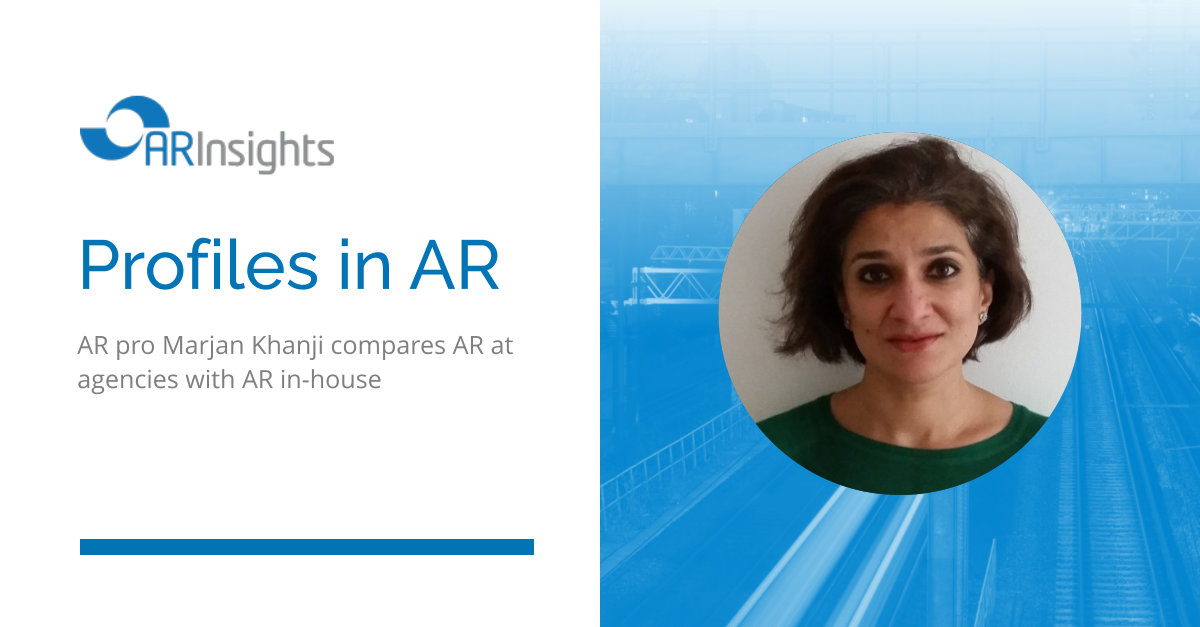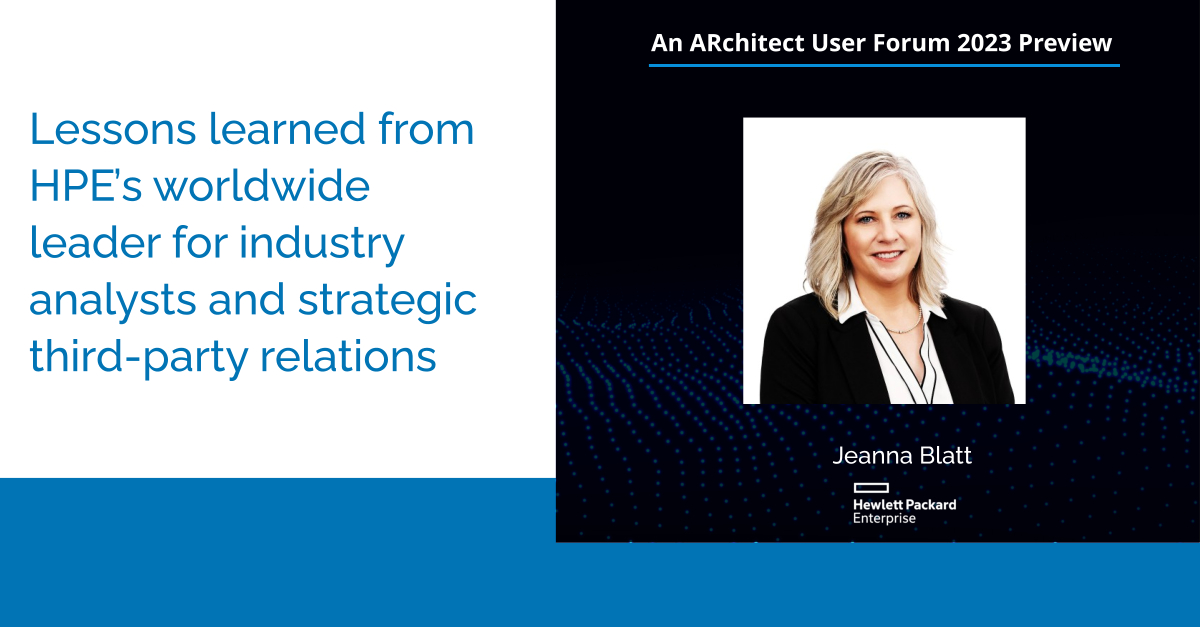We’re excited to share another “Profile in AR” with you. Our latest interview is with Marjan Khanji, analyst relations director at global technology services company NTT Ltd. Marjan has been immersed in analyst relations for more than 15 years.
Marjan brings an interesting perspective — having worked at PR agencies leading AR strategies and campaigns for clients and, more recently, successfully transitioning to an in-house AR role. At NTT Ltd., Marjan leads the AR program across all service lines.
Check out her thoughts on AR in agency vs. in-house environments, best practices if working with an agency and career advice for others considering a similar transition. We think you’ll find this a great read!
Q: If you had to choose three words to describe AR, what would they be?
Marjan: The first word is holistic. As an AR person, you get a 360-degree view of everything that goes in a business — product offerings, services, organizational goals, what’s happened in the past, what’s planned for the future — and then you present a comprehensive picture to the analyst community.
Second, it’s connecting. In any AR program, and particularly in a complex organization like NTT, you need to connect a lot of dots across a lot of different functions and objectives. It makes your day quite interesting and exciting, actually; there’s never a dull moment!
Lastly, it’s specialized. The most strategic programs are managed by professionals with many years of focused experience. People often think of AR as an extension of public relations, media relations, communications or marketing. While you can bolt on AR to these functions, that will not result in a program that actually influences the analysts. By definition, most AR activities have long lead times — such as reports that get published once a year — and therefore, the learning cycle is automatically an extended one. It’s never a sprint with AR; it’s a marathon.
Q: We’d love to hear about your career journey. What led you to analyst relations?
Marjan: Like many other AR people, I started my career in media relations. This was back in the early 2000s, when only a handful of the very large technology players were doing AR.
The PR agency I was working with at the time was more forward-looking than others and decided to diversify into AR alongside media relations. An analyst was brought in to develop the AR function, and I was able to help. So began my journey — first with basic, logistical AR activities, and then with more strategic elements. It piqued my interest! I found AR to be deep, analytical and well-suited to my skill set. So I went on to help fully develop the AR function at the agency, primarily by helping raise awareness of its benefits to my PR clients.
I gradually shifted the balance of my work to more AR activities. Then I moved on to other PR agencies and spearheaded AR functions there as well, before working as an independent consultant for 12 years. It was during this time that I had the opportunity to do an AR project for NTT Ltd., after which they invited me to pursue an in-house role. And the rest is history!
Q: What’s your day-to-day role like at NTT Ltd.? What’s the best part of your job?
Marjan: It ranges from one end of the spectrum to another! I could be deep down in planning our strategy for a highly influential competitive report or providing analyst insights to the PR team for messaging and positioning, or simply “herding cats” to organize a meeting at an event.
The best thing about my job is being part of the full AR cycle of an initiative. It’s exciting to see a product or service being developed from scratch and be part of the process to shape the strategy, take it to the analysts, incorporate their feedback and ultimately deliver it to the broader market. This gives you the sense of being part of every building block.
Another great part of my job is getting to deal with a lot of varied personalities, both internally and externally. I think AR is a bit unique, in that sense. Although I’m not client-facing, I still get to interact with external personalities in the analyst community, which is a lot of fun!
Q: What differences do you see between AR in an agency environment and AR in-house?
Marjan: With in-house, you definitely get to be much closer to the business. That means you find out about what’s coming up much sooner, when it’s still in its infancy. As opposed to being external — then you pretty much find out about something when it’s already baked and ready.
So in an in-house role, because you have visibility into the strategy and big initiatives from the get-go, you have a fuller picture of the life-cycle of an initiative and, hence, you understand the dependencies much better. You also have a better gauge of what specific elements need to be checked (and by whom) before they’re ready to go and when the initiative should be communicated to the broader analyst community. All of these things are almost invisible when you’re on the outside.
When you’re in-house, it’s also fascinating how many opportunities present themselves where you can glean new knowledge. You discover sources of information that you didn’t even know existed!
Q: What advice would you give to companies who use PR agencies to help with AR? How can they best work together?
Marjan: I would say that the single biggest thing is to make sure whoever is doing your AR is an AR specialist and not a PR expert. Analysts are directly involved in influencing customers’ and potential customers’ buying decisions, which is very different from what journalists do. If you have media relations specialists doing your AR, you’re probably only getting 20% of what you should be getting from them in your AR program. And I bet that 20% encompasses the least influential AR activities. You need agency people who understand analysts, who understand the community, who understand what it takes to move the needle of influence.
This also means that if you have external specialists helping with your AR, don’t just look at them as an execution arm. Involve them in strategy as well. It’s not just about how many briefings they’ve organized, or how many press releases they’ve distributed to analysts, or how many analyst meetings they’ve arranged at an event. How are these activities influencing the analysts? How are you measuring the influence? What has the AR program actually done for your business? Use your AR agency to help more directly in influencing business goals.
Q: What are some of your AR accomplishments that you’re most proud of?
Marjan: Enabling organizations to understand the value of AR. I’ve come across vendors who would say: “What is the value of AR? Why do we need to talk to analysts? We are doing PR; it’s more than enough.” And I have been able to get these organizations to look at it differently. They have come back to me saying, “I get great insights on the market from analysts,” or “We need to get a different perspective; let’s talk to an analyst.”
Another rewarding experience has been taking programs from a very basic level — where it involves establishing awareness among analysts — right up to making it a very sophisticated, mature program, with strong relationships between executives and analysts, and a regular cadence of exchanging information and feedback. Taking an organization on this journey is the AR holy grail.
More recently, I see moving from an external function to an in-house role as a big accomplishment. I believe I have broken some stereotypes — in my experience, many organizations believe that external AR consultants do not have the experience or knowledge of what it takes to do AR in-house. But the knowledge of the analyst community, interacting with stakeholders and a thorough understanding of AR nuances are the most important attributes. Beyond that, every AR professional has a learning journey because no two organizations are the same.
Q: Can you share advice for other people, looking to make the transition from AR at an agency to in-house?
Marjan: It is, for sure, a steep learning curve if you’ve never been in-house before. There are so many systems, processes, people, functions and all kinds of organizational idiosyncrasies to get familiar with, and these can be fast-changing too, so you have to be very resilient!
It can also be challenging if you’re working in a complex organization. For me, coming to work at a services company where there are five different lines of business, it can sometimes be like working for five different companies. I’ve been fortunate to have very supportive team members who’ve helped me through the journey, particularly as I’m a one-man band.
The transition is challenging, but it’s important to remember that your AR knowledge and skills are what matters most. You just have to be patient and creative in how you navigate an organization.
Q: What changes have you seen in AR over the course of your career?
Marjan: AR as a function has really matured. And while I say now that PR-only people aren’t the right ones to be doing AR, the fact is, everything started in a PR way. Back then, the way you did a journalist briefing was the way you did an analyst briefing: providing basic, high-level information, then moving on to the next opportunity.
AR has come a long way since that! In the last 10 years, it’s become so much more collaborative and deeper. Long-term relationships are everything, and that whole process takes time — interactions need to be regular and two-way. Companies today better understand what analysts bring to the table and vice versa.
Also, there are a lot more AR professionals in the industry now than there were 10-20 years ago, which is indicative of the fact that this has become a much more mature function.
Q: What’s your best piece of AR advice?
Marjan: Analysts are interested in a comprehensive picture of what an organization’s business strategy and goals are, not just the technology area they cover. So you need to stay close to a lot of different functions: marketing, product development, sales, corporate strategy, market intelligence, etc. The closer you are to them, the sooner in the cycle you know what’s coming, and the better you can prepare an impactful analyst comms strategy. If you’re coming from the outside to the inside, then it takes a special effort to ensure that happens.
Q: Who else would you recommend we reach out to for this series?
Marjan: I’d definitely recommend my former colleague Pam Crain, founder of Magnolia Analyst Relations. That’s the agency I was affiliated with before I joined NTT Ltd. Pam is terrific, and her journey is the reverse of mine: She used to be in-house and now is with an agency. She’d have great perspectives to share!
***
Many thanks to Marjan for these terrific insights! If you want to connect with Marjan, you can reach her on LinkedIn.
Stay tuned for additional interviews in our “Profiles in AR” series.




